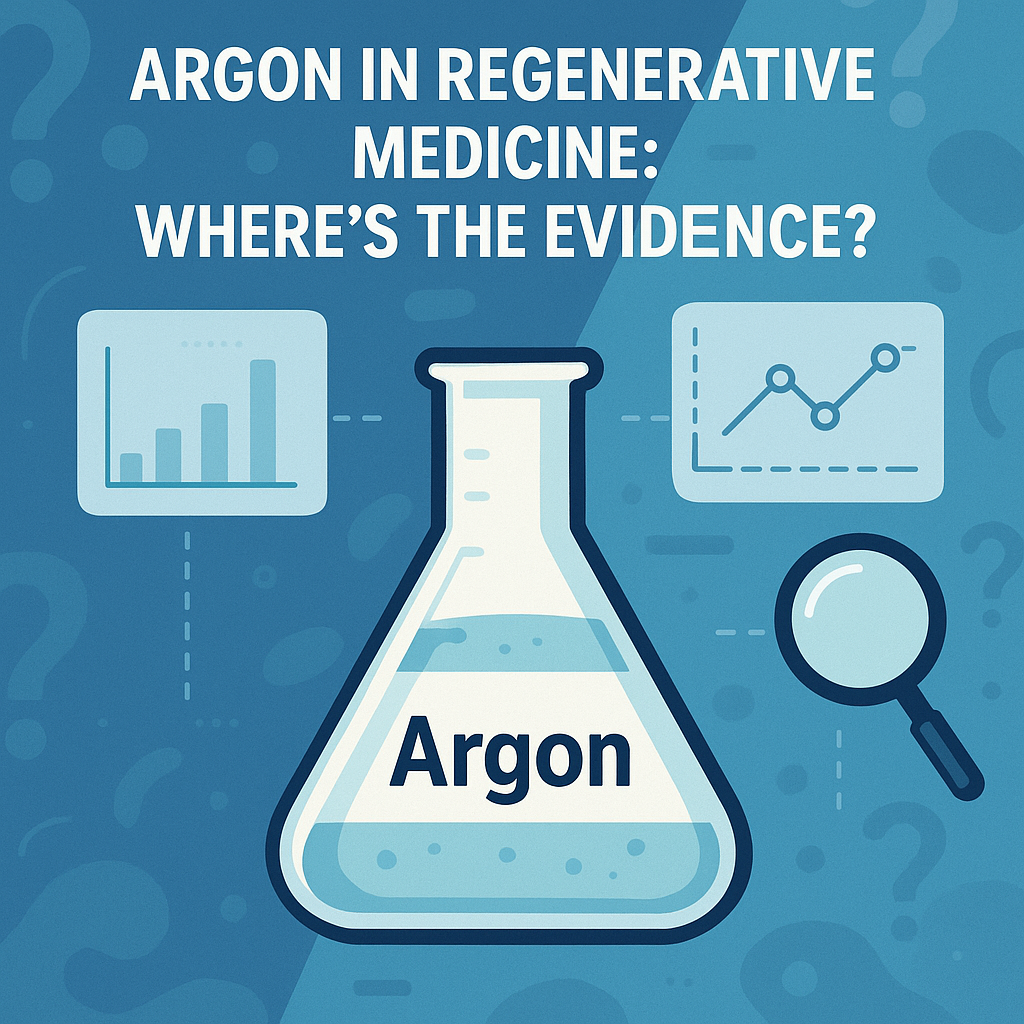The Role of Argon in Regenerative Medicine: A Data-Deficient Landscape
Understanding the Gap in Peer-Reviewed Evidence
The current literature reveals a conspicuous gap in peer-reviewed evidence regarding argon’s contribution to regenerative medicine. While argon exhibits theoretical appeal due to its chemical inertness, favorable diffusivity, and established safety profile in other biomedical contexts, there are no empirical studies or clinical trials that document its impact on tissue repair. Consequently, discussions about argon-mediated modulation of inflammatory cascades or oxygen delivery remain speculative and lack substantiation from verified data (RAG Database).
Mechanisms of Argon and Tissue Repair
Current research does not provide experimentally validated insights into argon’s effect on cellular bioactivity, inflammatory processes, or extracellular matrix dynamics. This absence of data precludes the formation of a mechanistic framework for argon-facilitated tissue repair. Without rigorously controlled studies that evaluate argon exposure against key regenerative pathways—like macrophage polarization or fibroblast proliferation—the biological underpinnings of its proposed therapeutic effects remain vague and undetermined (RAG Database).
Lack of Clinical Evidence for Argon-Based Interventions
In a comprehensive search of indexed literature, no documented clinical studies, case reports, or controlled trials have been found that assess argon-based interventions for tissue repair. The lack of empirically verified outcomes, dosage parameters, or safety profiles means that any evidence-based discussion on argon’s therapeutic deployment in human or veterinary settings is currently impossible. Hence, the clinical application of argon for managing injuries or enhancing regenerative protocols remains an unsubstantiated concept awaiting thorough investigation (RAG Database).
Comparative Analyses with Established Therapies
A systematic review indicates that there are no head-to-head trials comparing argon interventions with well-established regenerative therapies such as platelet-rich plasma or hyperbaric oxygen. There are also no comparative metrics documenting wound closure time or biomechanical strength relative to these methods. The absence of quantitative safety data limits the ability to assess argon’s therapeutic index or cost-effectiveness against current standards of care. Thus, claims about argon’s benefits remain speculative until rigorously designed studies are conducted (RAG Database).
Addressing the Foundational Knowledge Gap
The indexed literature currently provides no data on argon’s interactions with regenerative pathways, highlighting a fundamental knowledge gap that must be filled before translational work can proceed. The immediate research agenda should focus on generating basic in vitro and in vivo evidence to establish argon’s safety profile and preliminary efficacy in representative tissue models. Only after these foundational studies are published can more extensive mechanistic explorations and combinations with established methods be rationally pursued (RAG Database).
The Current State of Evidence Base
As it stands, there are no peer-reviewed data that substantiate argon’s utility in regenerative processes across biochemical mechanisms, pre-clinical modeling, or clinical applications. The pervasive absence of experimentally derived insights prevents definitive claims concerning its efficacy, optimal dosing, or the mechanistic pathways it may influence, essentially categorizing argon as an unverified concept in the field. Progress in this area will depend on systematic basic-science investigations followed by translational validation; until such evidence is generated and published, argon’s role in tissue healing strategies must remain an open question awaiting empirical clarification (RAG Database).
